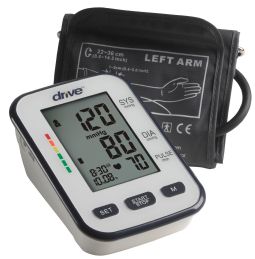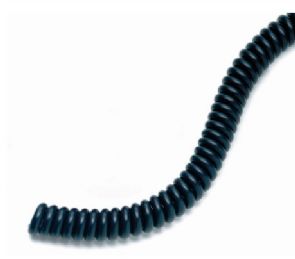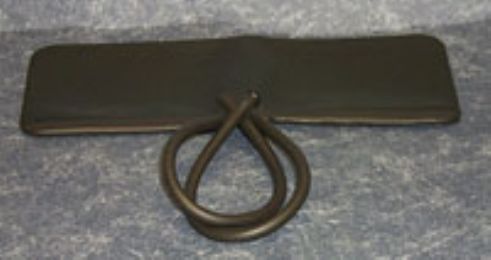
A blood pressure monitor is a medical device that measures and displays the blood pressure reading of a patient. Also known as a sphygmomanometer, it usually consists of an inflatable arm cuff, a stethoscope (for manual BP monitors) and a gauge to measure and display the blood pressure reading. A common medical device, a blood pressure monitor is used in all medical facilities on all types of patients.

























Hypertension and Hypotension
A person’s blood pressure is measured in millimeters of mercury (mm Hg), and is normally expressed in terms of systolic pressure over diastolic pressure. Measurement normally occurs at a person’s upper arm. Blood pressure is regulated by the nervous and endocrine systems. It will vary depending on situation, activity and disease states. Normal resting blood pressure for an adult is approximately 120/80 mmHg (US). Blood pressure that is clinically low is known as hypotension, and pressure that is clinically high is called hypertension. Both hypotension and hypertension have many causes. Effects can range from mild to severe, with both acute and chronic forms. They often go undetected because of infrequent monitoring.
Blood pressure is determined by the amount of blood your heart pumps and the amount of resistance to blood flow that exists in your arteries. The more blood your heart pumps and the narrower your arteries, the higher your blood pressure. High blood pressure (HBP or hypertension) is a common condition in which the force of blood against the artery walls is high enough that it may eventually cause health problems, such as heart disease.
A person can have high blood pressure without any symptoms for years. Even though no symptoms are present, detectable damage to the blood vessels and heart continues. Uncontrolled high blood pressure increases the risk of serious health problems, including peripheral vascular disease, heart attack and stroke.
High blood pressure affects nearly everyone eventually, generally developing over many years. The condition is easily detected through blood pressure measurement. Once you have been diagnosed with high blood pressure, you can work with your doctor to control it. Treatment may include medications, and will almost certainly include lifestyle recommendations regarding diet and exercise. Ongoing blood pressure monitoring will also be necessary.
While high blood pressure is a more common health issue, blood pressure that is too low (hypotension) can also occur. Hypotension is a medical concern if it causes symptoms such as lightheadedness, dizziness, fainting, or in extreme cases, shock. Discuss such symptoms with your healthcare provider.
Why is Monitoring Blood Pressure at Home Important?
Monitoring your blood pressure is an important part of protecting your health. Your doctor may recommend home monitoring in between office visits. Rehabmart offers a variety of superior quality blood pressure monitors that can be used for home monitoring as well as in professional healthcare environments.
Your healthcare provider needs an accurate picture of what is occurring inside your arteries. A single measurement of your blood pressure taken at the doctor’s office is like a snapshot. It tells what your blood pressure was during one moment in time. There is no way to sense fluctuations in blood pressure, and no symptoms for hypertension (high blood pressure or HBP). Measuring with a blood pressure monitor is the only way to get facts about what is occurring.
Readings can vary throughout the day and may be temporarily influenced by factors such as emotion, diet, exercise and smoking. Recording blood pressure readings taken over a period of time can provide a clearer picture of your blood pressure. This is known as “charting,” which provides more of a time-lapse picture of your blood pressure for you and your healthcare provider.
Charting can also help eliminate false readings that occur due to a condition known as “white-coat hypertension.” This condition occurs in people who experience anxiety when at a doctor’s office, and leads to temporarily higher blood pressure readings. “Reverse white-coat hypertension” or “masked hypertension” is when an individual’s blood pressure reading is normal in a professional’s office but elevated outside the office. These types of false readings can lead to misdiagnosis of HBP.
Research has shown that self-measurement at home can be helpful in the early diagnosis of hypertension and in managing high blood pressure once diagnosed. This should be in addition to regular monitoring in a healthcare provider’s office and not used as a substitute for regular visits to your physician. Your doctor may recommend that you monitor your blood pressure at home if:
You have been diagnosed with pre-hypertension.
You have been diagnosed with hypertension.
You have risk factors for high blood pressure, such as diabetes or kidney problems.
The American Heart Association and other organizations recommend home monitoring for all people with high blood pressure to help the healthcare provider determine whether treatments are working. It’s an easy step you can take to help control your condition. Even if your blood pressure readings are in the normal range during home monitoring, do not stop taking any prescribed medication without consulting your doctor.
Home monitoring may be especially useful for women who are pregnant, since preeclampsia or pregnancy-induced hypertension can develop rapidly.
People with atrial fibrillation or other heart arrhythmias may not be good candidates for home monitoring because devices recommended for home use may or may not give accurate measurements for people with these conditions. As always, work with your healthcare provider to determine the best solution for you.
Monitoring your blood pressure is an important part of protecting your health. Your doctor may recommend home monitoring in between office visits.
Rehabmart is pleased to offer a good selection of quality blood pressure monitors by Independence Medical, MaxiAids, LSS, Mabis, McKesson Medical Surgical, Medline, and Medquip.
Hulet Smith, OT
Rehabmart Co-Founder & CEO
nrb